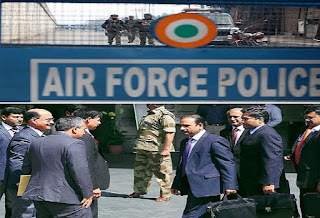Corporate social responsibility is a new concept in India. India is perhaps the first country in the world to have CSR in statute. In just two years since the law came into being in April 2014, it is proving to be a game changer for the weaker and marginalized sections of the society.
India’s business houses deserve a special mention for partnering with the government to improve the health and welfare of socially-excluded populations through the corporate social responsibility (CSR). A country which grapples with multiple socio-economic challenges, the CSR has the potential to create sustainable development.
An estimated 23.6 percent of Indian population, or about 276 million people, continue to live below the poverty line with purchasing power parity of just $1.25 per day. And most of them come from the marginalized sections of the society such as tribes, dalits and lower castes. Though the government has been providing subsidy to them in various forms, those are either not enough or do not reach the needy due to red tape and corruption.
It is in this context that the parliament passed the bill in 2013 making it mandatory for some companies to spend 2 percent of profits on uplifting the poor. The proposal was first mooted in 2011 when the government came out with national voluntary guidelines (NVGs) which listed out social, environmental and economic responsibilities of businesses in India. But the NVGs were largely advisory in nature than mandatory. It was only with the new Companies Act, 2013, that CSR spending was made a statutory obligation for companies incorporated under the Act.
And in just two years, the initiative has touched the lives of millions of poor people and its benefits have percolated down to the lower strata of the society. Education and skills, healthcare, environment sustainability, gender equality and rural development are among several sectors which have been aggressively targeted by hundreds of business houses. According to a PwC/CII report, this two per cent from some 6,000 companies in India may amount to as much as Rs 20,000 crore (Rs 200 billion) every year. This has the potential to address the country’s chronic problems in near future.
There were many who thought that the CSR was another form of tax which was introduced through back door. But figures suggest that the initiative has been well received by business houses. Out of a total 250 Bombay Stock Exchange-listed companies, over 100 firms spent either more than the prescribed CSR or spent exactly as prescribed. This shows that there has been explicit compliance to the government’s legislation. There were only 19 percent of companies which either did not spend on CSR or their contributions were between 0.1 percent and 33 percent of the prescribed amount.
In fact, some of the prominent Indian businesses have been involved in philanthropy for long and have done a commendable job in non-profit causes. Those firms had their own foundations which were involved in philanthropic works. But still there were companies which did not take upon the responsibility to make contribution towards the society. There was a growing demand that the business sector needed to do more for the country’ socio economic development. It was then that the need for legislation was felt. The new law required companies with market capitalisation of more than 5 billion rupees to spend 2 percent of their annual net profits on CSR, such as social work or charity.
Poverty eradication, promotion of education and skills, rural sports, environment sustainability, protection of national heritage and contributions to prime minister’s relief fund were among the measures suggested by the government. But companies have expanded the scope and have brought under preview of CSR healthcare, gender equality, rural development, technology incubation, armed forces to name a few.
A close scrutiny of sector wise CSR spend shows that healthcare and education got the maximum boost. Nearly one third of the total actual CSR spent in the 2014-15 fiscal year was reserved for healthcare which saw the launch of 924 projects. Education and skills followed with 29 percent of total spent amount attracting 1,144 projects. Environment sustainability, rural development and gender equality were the other targeted areas of corporate business houses. The 2014-15 figures show that 55.63 billion rupees were spent under the CSR head as against the prescribed spend of 70.40 billion rupees amounting to 79 percent, which is very encouraging.
But not all the states have reaped the benefits as CSR activities have not covered the entire country in an equitable manner. Maharashtra, Karnataka, Tamil Nadu, Gujarat and Uttar Pradesh, which already figure in the top ten states as far as GDP growth is concerned, benefitted the most as far as the number of projects is concerned. On the contrary, the remote northeastern states of Tripura, Nagaland, Mizoram, Meghalaya and Manipur saw very little CSR spend. Maharashtra, which is the country’s leading industrial state and number one in terms of GDP, bagged the maximum 948 projects, according to Ngobox. The country’s eight northeastern states, which contribute just 2.64 percent to the national economy, invited very less CSR spend. One reason can be attributed to the fact that most of the business offices have their presence in industrialized and software hubs where it is easier for them to implement and monitor the projects. The government and the corporate sector should chalk out a strategy to address this anomaly.
There are many who believe that the CSR scope can be widened by getting more companies under its net if the government offers 100 percent tax exemption. So far, the government has announced 100 percent tax exemption in CSR activities for Clean Ganga Fund and Swachh Bharat Kosh. Contributions to Prime Minister's National Relief Fund are allowed as 100 percent deduction. The government can consider widening the activities under the CSR ambit for tax exemption to encourage business houses to participate in the nation-building exercise on a sustainable basis.










